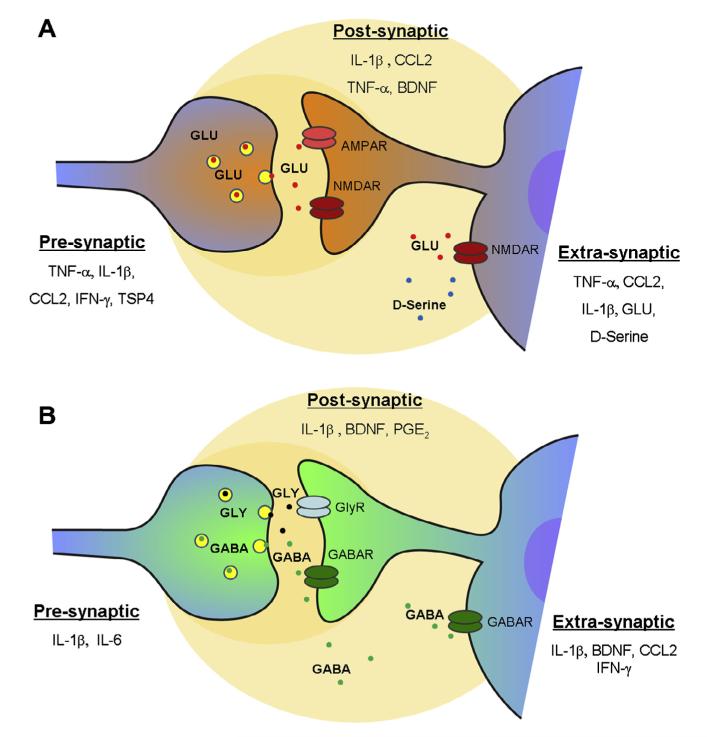Fig. 4.
Glial mediators modulate excitatory and inhibitory synaptic transmission in the spinal cord. (A) Modulation of excitatory synaptic transmission at presynaptic, postsynaptic, and extrasynaptic sites by glial mediators. Presynaptically, tumor necrosis factor-α (TNF-α), interleukin-1β (IL-1β), CCL2, interferon-γ (IFN-γ), and TSP4 increase glutamate release to enhance EPSC frequency. Postsynaptically, IL-1β TNF-α, and CCL2 increase AMPAR activity. Extrasynaptically, TNF-α, IL-1β, CCL2, and D-serine increase NMDAR-NR2B activity and enhance NMDA-induced currents. Astrocyte-released glutamate can further induce NR2B-mediated inward currents in surrounding neurons. (B) Modulation of inhibitory synaptic transmission at presynaptic, postsynaptic, and extrasynaptic sites. Presynaptically, IL-1β and IL-6 decrease GABA and glycine release to decrease IPSC frequency. Postsynaptically, IL-1β decreases GABA/GlyR activity and IPSC amplitude. Prostaglandin E2(PGE2) inhibits evoked glycine current. Extrasynaptically, IL-1β, CCL2, and IFN-γ suppress GABA-and/or glycine-induced currents. TNF-α inhibits action potentials in inhibitory neurons. In lamina I neurons, BDNF produces disinhibition by altering chloride reverse potential.

